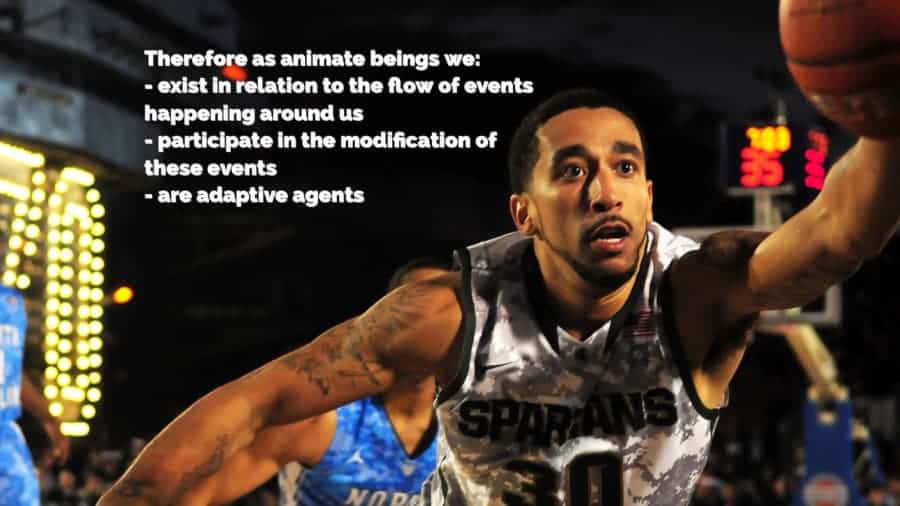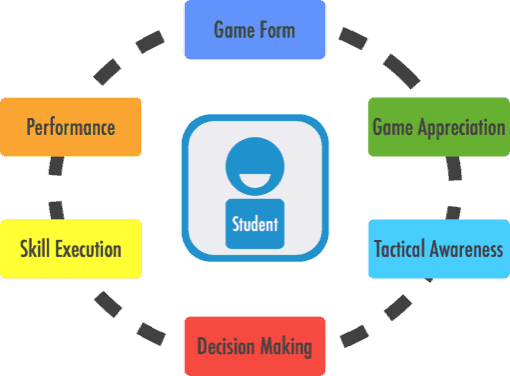Between Monday 25th July and Wednesday 27th July 2016 I attended the Teaching Games for Understanding Conference in Cologne, Germany. The following series of posts will be a collection of the information shared by the presenters with some of my personal thoughts and questions.
We are what we teach: TGfU as a complex ecological situation – Joy Butler
Joy Butler asked the audience the question ‘is there a difference between the body as a thing or the body as a situation?‘
If we see the body as a thing then we think in terms of performance. If we see it as a situation then we see the body as something complex and interconnected to the environment in which it habits. This is essentially the fundamental philosophy that underpins TGfU as a curriculum model and pedagogical process. We see the learner in context, not the body in isolation. At it’s heart TGfU promotes engagement, connection and agency. If fact if we are to use TGfU or other game centred approaches as our default method of teaching games then we as PE teachers are subscribing to a certain philosophy. A philosophy that we move from what they can’t do, to what they can do. That our philosophy is to encourage play and invention and then to help them reinvent. Our philosophy essentially determines who were are as a teacher and how we teach.
| Body as a Thing | Body as a Situation | |
| World View | Disciplinary Mastery | Ecological Complexity |
| Why it is taught? | Performance Model | Play Education |
| Source of ideas | Behaviorism: shaping, modeling, practice, feedback and reinforcing | Emergent Learning: social constructivism, complexity and ecological dynamics |
| Values | Dualism | Integrates mind and body with the environment |
| Theory of human action | · Response learning· Teacher centered
· Part then whole · Transmission · Technique based · Teacher + learner · Mastery |
· Emergent learning· Learning centered
· Whole-part-whole · Facilitation of problem-solving · Principles based · Multi-dimensional · Demonstration of understanding |
| Theory of Knowledge | Define what we know | Discover what is unknown to apply what is known |
| Building Blocks | How do we get from here… | …to here |
Thoughts and Questions: Over the course of the last few years in teaching I have been drawn to the idea that the body is a situation rather than a thing. I have begun to explore the ideas of Complexity Thinking, Model Based Practice and Ecological Dynamics. I have witnessed the improvement of motivation and engagement both within PE and school sports by embracing this ontology. However whilst it seems to solve many of the issues than my previous traditional drill approach did, I continue to wonder if it is a silver bullet. There are the occasions when an individual child struggles with the environment they are in, no matter how much we reduce the complexity of it. That the support they need at that moment in time is explicit command and practice. Is it possible to hold both conflicting views at the same time, and see them as two sides of the same coin rather than conflicting philosophies?
Further Reading: Emergent learning focused teachers and their ecological complexity worldview
The ecological dynamics approach to sport pedagogies – Duarte Araujo and Ian Renshaw
Duarte Araujo continued the theme of ‘body as a thing or in situation’ by stating that animate beings are unlike inanimate things. As animate beings we are ceaseless active and engaging in our surroundings in a selective manner. What that means is that we observe the ongoing environmental conditions and the information that provides us, make functional adjustments because of the information available and then selectively engage with the features of the environment that help us achieve our preferred goal.

Ecological Dynamics provides can provide a coherent and principled framework for the individual as an ‘animate being’ within the performance or practice environment. It also asks us questions on whether the existing methodology of training, practice and teaching can be improved. Ian Renshaw then shared the experiences of a PE Teacher using a constraints led approach within a Year 11 volleyball scheme of work. This was done to try and address the difficulties in practitioners using and applying alternative teaching methods such as TGfU that are popular but have limited take up by teachers and coaches. As always some of the key issues of adopting a new approach is time and support. Time to plan and design questions, representative tasks and constraints which is fundamental to both a constraints led approach or game centred approaches like TGfU.
Thoughts and Questions: One of the key questions raised throughout the conference was ‘why aren’t more practitioners using TGfU?’ (or other game centred approaches). Whilst many ideas were put forward by the presenters, (which I will share in a future post), for me it is what the conference itself was promoting. Highly theoretical and transmission based sessions in a lecture style setting as opposed to a complex environment such as a school. The theme of complexity and emergence ran strong within the conference, but many of the sessions were not congruent to the values were being espousing. Perhaps something less sterile and more practical in nature of delivery may be beneficial for getting more teachers and coaches implementing a games based or constraints led approach. However some good advice was given. When learning something new like TGfU start with an activity you know and are confident in, start small with one of the key principles and build from there.
Further Reading: Overcoming acculturation: Physical education recruits’ experiences of an alternative pedagogical approach to games teaching

